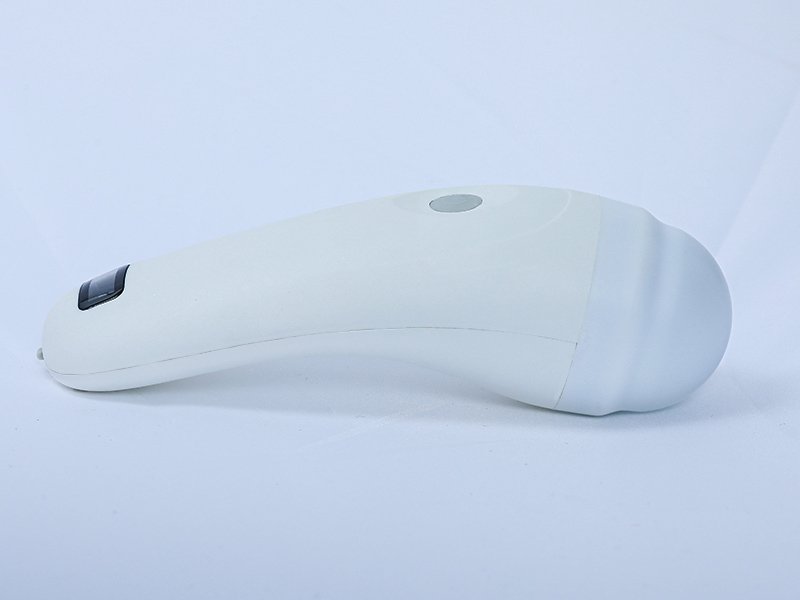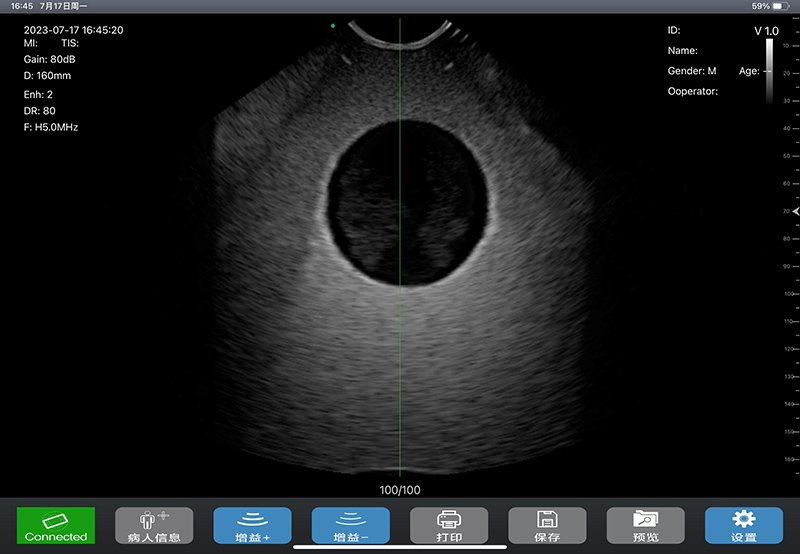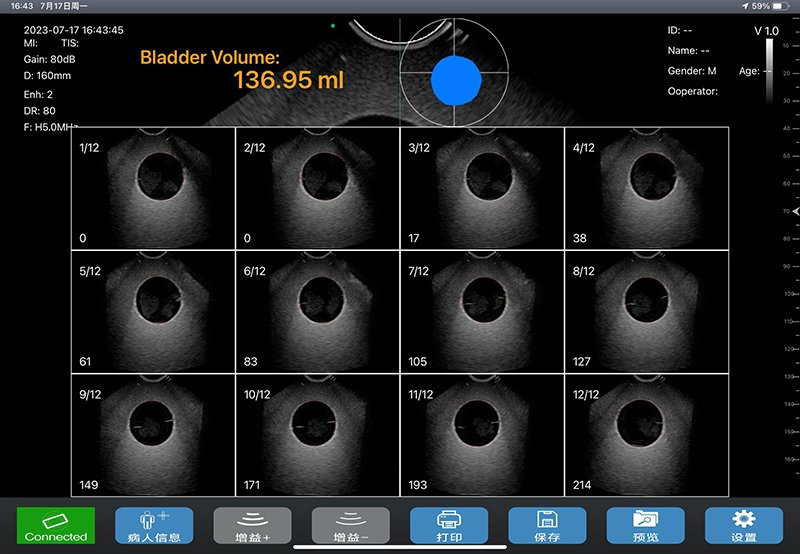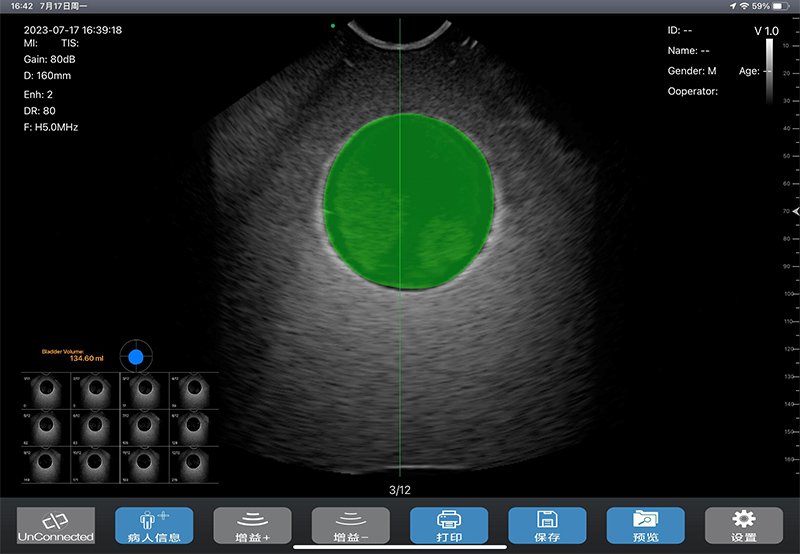- Immediate contact :
- +1-323-988-5889
- info@sonosif.com

Micro Convex Ultrasound Scanner Color Doppler 192 element: MCC-5.04
November 2, 2023
Ophtalmic Color Doppler Convex Ultrasound Scanner CC-32 with 64 channels and 80 element
November 2, 20234D Bladder Ultrasound Scanner: B6-4D
$4,000 Original price was: $4,000.$2,895Current price is: $2,895.
Scan Method: 4D scanning
Probe Frequency: 5 MHz
Measuring range: 50ml ~ 2000ml;
Automatic measurement inaccuracies: <5%;
Scan and process <2 seconds
4D Bladder Ultrasound Scanner: B6-4D
The B6-4D wireless probe is a mini ultrasound scanner without a screen. We minimize the components of a traditional ultrasound into a small circuit board built into the probe and show images in smart phone/tablets through Wifi transferring. image can both show on the screen and tablet. Image transferring through internal wifi from the probe, no need for an external Wifi signal.
– One probe, small and lightweight, easy to carry
– Connect the tablet with the probe by WiFi, easy operation
– High accuracy (Erro less than 5%)
– Fast scanning speed (only 2 seconds)
– Large measurement range from 50ml to 2000ml
– Electronic convex array 4D scanning with high channel number and array element configuration, with clear images and no mechanical scanning distortion
– R20 probe with large scanning angle and coverage
– High precision rotary encoder, precise positioning, never requiring calibration service
– Advanced measurement algorithms, powerful bladder wall recognition technology, accurate edge detection technology, and high-precision probes make scanning measurement results more accurate: among them, the new algorithm is not affected by bladder shape and size, and there is no need to consider selectivity, age group, or the impact of special circumstances such as hysterectomy on bladder shape when using, making it more compatible with different bladder types, There will be no significant error in the measurement results when detecting small volume bladder or specially shaped bladder, and the operation is also more convenient; AI and other technologies are used to identify bladder wall more accurately, including high recognition rate of the bladder wall with air attached. Even if the bladder is not full of urine, urine volume can be accurately measured. In addition, the AI function can also be used to identify bladder wall that is not good for edge hooking. Take the abnormal map to the training set for training to solve the hard problem of consciousness of edge hooking
– The scanning process has good real-time images, which can be better used for real-time visual monitoring of foley catheter insertion and removal, and better prevent the pain caused by blind insertion to patients
Features:
Handheld, ergonomic design
Standalone or on-tablet operations
Independent Wifi connectivity between probe and tablet
Manage patient information, case, and report from tablet
Upload from tablet to PC
Specification:
1. Scan mode: array probe, 4D scan;
2. Supporting system: Apple iOS;
3. Measuring range: 50ml ~ 2000ml;
4. Automatic measurement inaccuracies: <5%;
5. Scan and process<2 seconds;
6. Scanned image display frame: 15 frames/seconds;
7. Case Storage: by tablet ;
8. Printing: external wireless thermal printer;
9. Battery: Built-in battery, charge one time can work on more than 200 patients;
10. Power: by USB cable charge;
11. Dimension: 170mm × 52mm × 55mm;
12. Weight: 200g.
Applications:
1. Urology: Determine the degree of acute and chronic urinary retention, and determine the timing of catheterization and surgery; Neuromodulation was used to judge the effect of regulation after operation; Determination of the degree of urethral obstruction or prostate hyperplasia.
2. Obstetrics: Postpartum stress urinary incontinence; Determine the degree of postpartum pelvic floor muscle damage.
3. Gynecology: Determine the degree of pelvic floor neuromuscular injury after pelvic tumor surgery, and determine the surgical or rehabilitation therapy plan. 4. Severe ICU: Determining the timing of intermittent catheterization for patients with long-term indwelling catheters, reducing the frequency of catheterization, reducing the risk of infection, and helping patients recover from spontaneous urination.
5. Neurology department: to determine the damage degree of detrusor and sphincter in patients with neurogenic bladder.
6. Nursing: For patients with indwelling catheters after surgery, it is used to determine the timing of catheter removal, reduce the duration of catheter retention, and reduce the risk of infection.
7. Rehabilitation department: monitoring the effectiveness of pelvic floor rehabilitation treatment; Developing a training plan for bladder retraining and rehabilitation treatment, providing a basis for the degree of bladder function recovery.
8. Emergency Department: Diagnosis of acute urinary pig retention patients and guidance for urinary catheterization; Acute trauma is used to determine whether a patient’s bladder is damaged or ruptured.
9. Radiotherapy department: Used to determine bladder function during radiotherapy for patients with pelvic floor tumors or bladder tumors.
Please Login To Download Attachment
Related products
-
Wireless Bladder Ultrasound Scanner FDA – B5-3D
$6,500Original price was: $6,500.$4,695Current price is: $4,695. -
3D Bladder WiFi Ultrasound Scanner LCD touch screen B3-3D
$7,500Original price was: $7,500.$4,999Current price is: $4,999. -
Wireless 4D Bladder Ultrasound Scanner B-4D FDA
$3,000Original price was: $3,000.$2,095Current price is: $2,095.









Reviews
There are no reviews yet.